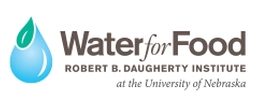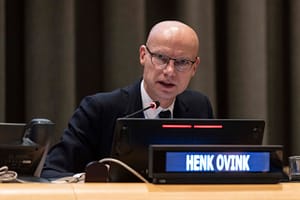During World Water Week 2019 in Stockholm, Sweden, experts from the Federal Institute for Geosciences and Natural Resources (BGR), United Nations Children’s Fund (UNICEF), the Joint Monitoring Programme (JMP), Skat Foundation, the Rural Water Supply Network (RWSN), Water Mission and the Institut Géographique du Burundi (IGEBU) discussed how to safely manage drinking water services for rural populations, acknowledging that they are often supplied by groundwater.
Target 6.1 of the United Nations Sustainable Development Goals (SDGs) aims to achieve universal and equitable access to safe and affordable drinking water for all by 2030. Presently, only about 55% of the world’s rural population has access to a safely managed drinking water services, compared to about 85% of the urban population. Up to now, investments in urban areas, for mostly large-scale water supply services, are significantly higher than in rural areas, which are dominated by small distributed systems and point sources. For rural areas, achieving SDG Target 6.1 requires not only building more infrastructure, but also developing the human and institutional capacities needed to plan, develop, manage and regulate the water service provision.
It is increasingly acknowledged that groundwater plays a crucial role in achieving the objective of providing clean drinking water for all. With aquifers being almost ubiquitous, groundwater provides a buffer during drought periods in many regions. There are numerous initiatives to provide rural populations with access to this vital resource. However, this requires management and protection of the resource, and a significant improvement in groundwater management policies and practices. This calls for not only political commitment, but also investment.
The session raised awareness of the centrality of groundwater management in achieving SDG Target 6.1 in rural areas, and examined the viability of small-scale, decentralized systems and point sources.
Through a presentation by Tom Slaymaker from JMP, the session first provided an overview of the regional status and trends in the water resources used in rural areas, particularly in sub-Saharan Africa.
This was followed, through a presentation by Ir Nijimbere Robert from IGEBU, by a close look at the current situation in Burundi, one of the most densely populated countries in Africa with a population growth rate of 3.2% per year. The existing surface water supply services (even if rehabilitated) are insufficient to cover the entire water needs of the rural population, so alternative sources are required. Therefore, a new concept is being developed in Burundi to promote the use of groundwater through boreholes, where other options are limited or too expensive. This requires mapping of groundwater potential, exploration of possible drilling sites, drilling, and data analysis as well as capacity building and considering drilling regulations.

Tom Slaymaker explained the SDG Drinking Water Ladder (photo: BGR).

Ir Nijimbere Robert highlighted the main challenges that Burundi faces in providing safe drinking water (photo: BGR).
Subsequently, Kerstin Danert from Skat Foundation explained the importance of training and mentoring for drillers as well as for those siting and supervising construction, highlighting the major challenges they face.
The presentation by Andrew Armstrong from Water Mission addressed the question of how groundwater could be protected and abstracted in a manner that ensures a lasting water service for the rural populations. It highlighted that current funding and financing are insufficient, and service delivery models and technical skills are often inadequate to support groundwater abstraction in the manner required to achieve the SDGs.

The centrality of capacity building in drilling, drilling management and borehole maintenance to meet the SDG target was discussed by Kerstin Danert (photo: BGR).

Andrew Armstrong addressed the question of how groundwater can be abstracted in a manner that protects the valuable resource while ensuring that rural populations enjoy lasting water services (photo: BGR).
In the panel discussion at the end of the session, Benson Kandeh, a local driller from Sierra Leone, highlighted that it is important for foreign aid agencies to be aware of the circumstances of the local community and their environmental realities.

Participants during the panel discussion (photo: BGR).
To sign up for GRIPP news and updates, click here.










































